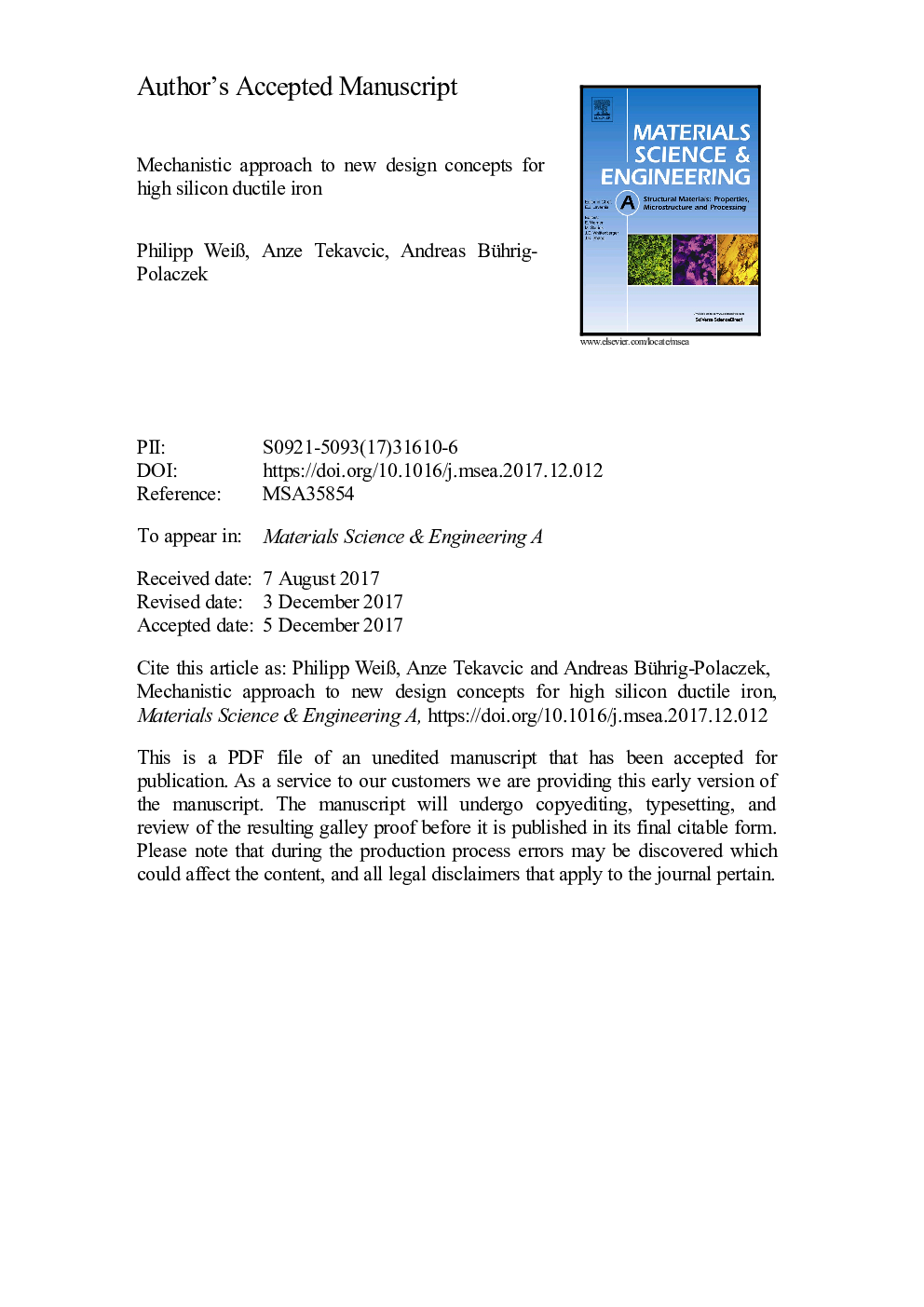| Article ID | Journal | Published Year | Pages | File Type |
|---|---|---|---|---|
| 7973712 | Materials Science and Engineering: A | 2018 | 23 Pages |
Abstract
Due to its superior mechanical properties, castability, machinability and price, the number of applications for high silicon solid solution strenghtened ferritic ductile cast iron is strongly increasing. However, the solid solution strengthening is limited to a maximum of 4.3Â wt% silicon. A higher silicon content leads to a decline of UTS, YTS and to a strong decline in elongation at fracture. In order to analyze the fundamental mechanism, Y2 and Y4 standard DI specimens were casted with silicon contents varying between 3.95 and 5.63Â wt%. For a comprehensive analysis, all investigations were conducted on specimens manufactured from the same castings. With increasing silicon, the fracture type changes from ductile to brittle, whereas the graphite nodularity, nodule size and nodule count as well as the amount of harmful phases cannot be connected to the observed embrittlement phenomena. Therefore a ductile (3.95Â wt% Si) and a brittle specimen (5.36Â wt% Si) where investigated via TEM diffraction. It was shown that the amount of B2-ordered phases in the matrix strongly increases with increasing Si-Content. Moreover, reflexes of DO3-ordered phases could only be observed in the brittle specimen. Silicon long-range-ordering can be concluded as the main reason for the upper limit of silicon solid solution strengthening in ductile iron grades in accordance to previous findings for silicon steels. The presented study paves the way for mechanistically based new alloy design concepts for high silicon ductile iron.
Related Topics
Physical Sciences and Engineering
Materials Science
Materials Science (General)
Authors
Philipp WeiÃ, Anže TekavÄiÄ, Andreas Bührig-Polaczek,
